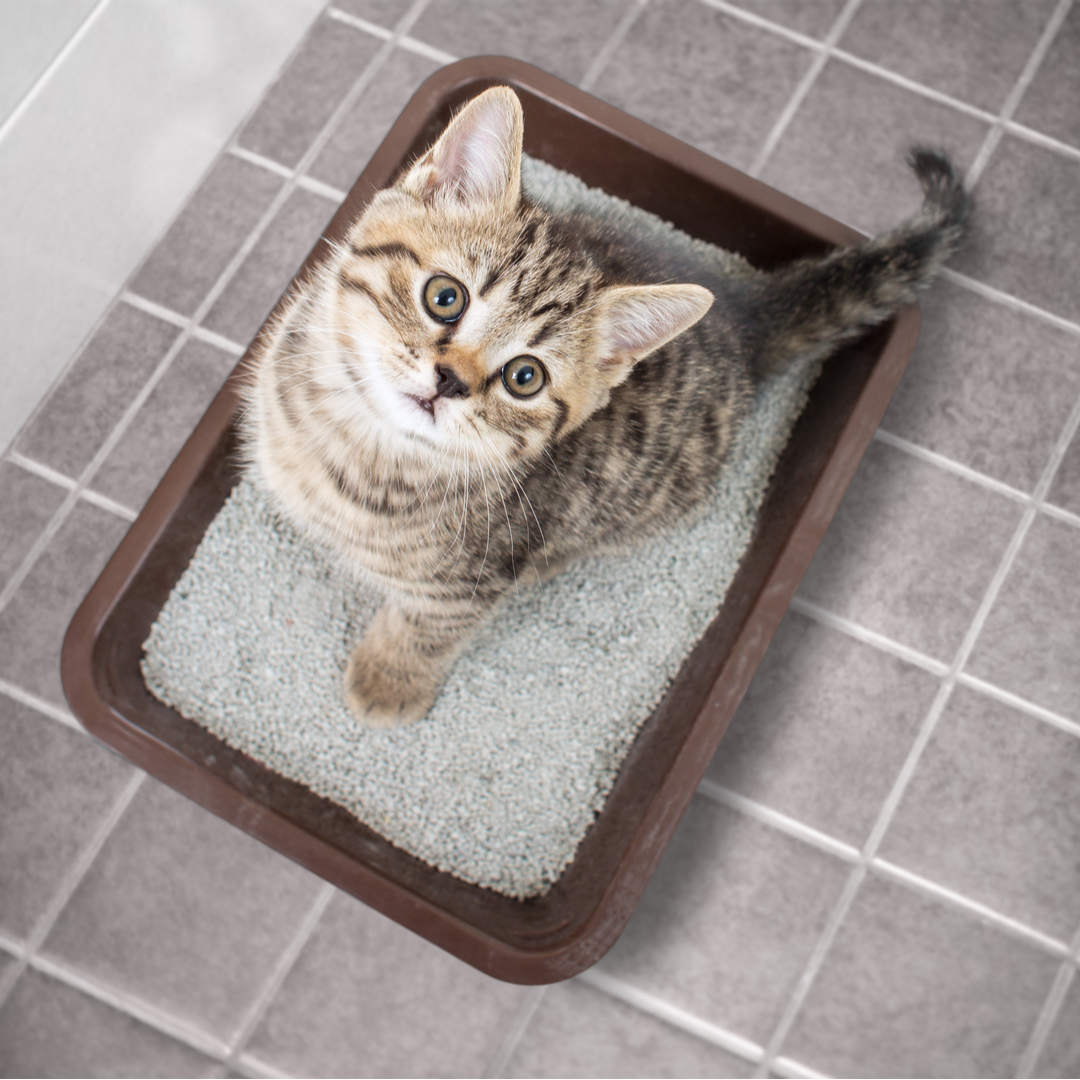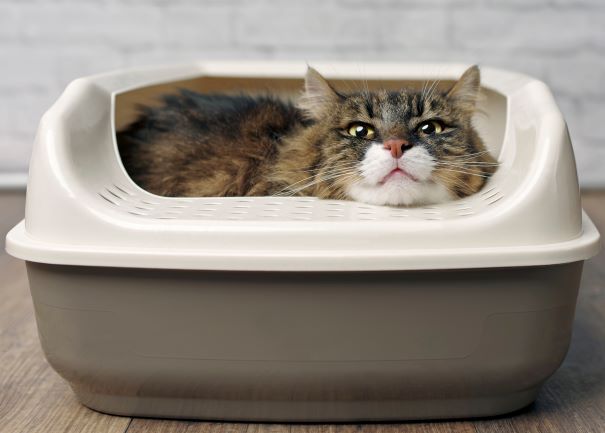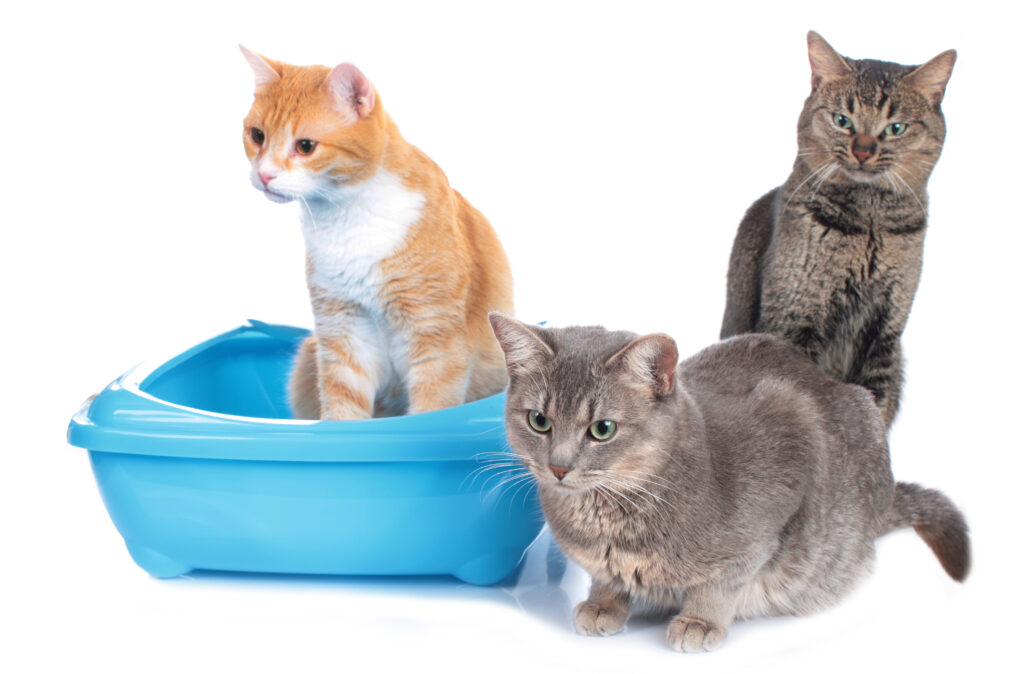
How to Solve Your Cat’s Litter Box Problems
Cats With Litter Box Issues
Is it normal for cats to have problems using a litter box? Even though it seems like using a litter box is basic cat care, you’ll be relieved to find that you’re not alone! Many cat owners have encountered litter box issues. In fact, according to American Humane, “litter box issues are the most common behavior problems that occur among cats.” So, what’s a cat parent to do? Luckily, there are several things that you can do to ensure your cat uses his/her litter box consistently.
Rule Out Possible Health Conditions
Certain health problems can hinder your cat’s ability to use the litter box. That’s why you might want to find a vet near you to get your cat checked out just to make sure everything’s okay.

Some health issues that cause litter box problems include:
- Urinary Tract Infection (UTI)
- Feline Interstitial Cystitis
- Bladder Stones
- Blockages
- Diabetes
- Kidney Disease
- Constipation
- Diarrhea
- Dementia
If your veterinarian can’t find anything wrong with your pet, it’s time to try the other suggestions listed below.
Change the Set-Up
Got a finicky feline? If so, your cat probably has its own ideas about where and how the litter box should be set up.
Here are some scenarios that might not suit your kitty:
- The litter box is in a busy area of the home.
- The litter box is next to a noisy appliance, such as the laundry machine.
- Your cat’s food and water bowls are too close to the litter box.
- The litter box is difficult to access.
- Your cat is too big to easily fit inside the box.
- Your cat is on the smaller side and has trouble climbing into a big box.
- You have a covered litter box that makes your cat feel claustrophobic.
Helping your cat settle into your home can be the issue. If your cat isn’t thrilled with the litter box you chose and/or where you placed it, you need to make some changes. Test different litter boxes and locations until your puss seems satisfied.
You should also evaluate how full the litter box is. Cats tend to prefer less rather than more litter in the box, so aim for one to two inches of litter.
Try a Different Type of Litter
If you have the right box in just the right spot, your cat still might refuse to use it if your feline doesn’t like the litter it contains. In that case, you will need to find a new type of litter. There are so many different options out there and each cat has its own preference. Finding the litter that your kitty likes best will require trial and error.
Just to get you started, here are a few of your choices:
- Clay litter
- Silica gel litter
- Pine
- Wheat
- Grass
- Corn
- Recycled paper
Clean the Box More Often
You can’t blame your cat for refusing to use a dirty bathroom. So, be sure to keep the box clean by scooping out the dirty litter on a daily basis. You should also dump out all the litter, rinse the box, and fill it with fresh litter on a weekly basis.
Make it Easy for Your Cat to Get Inside the Box
Senior felines and cats with arthritis need a litter box that’s easy to get in and out of. In this situation, a litter box with low sides is your best bet.
Help Your Cat Destress
Think about what’s going on in your pet’s life right now. Did you recently move? Have you added a dog to your furry family? Do you have house guests staying for a while?
Anything that makes your furball feel stressed can negatively impact your cat’s litter box habits. If you suspect that’s the case for your kitty, you must attempt to reduce or eliminate that stress.
Keep in mind, stress caused by major changes will probably wear off as your cat adjusts. You can help your pet through this rough transition by giving your fur baby an extra dose of love and attention.
Provide Enough Litter Boxes for All of Your Cats
If you’ve got more than one feline you definitely need more than one litter box. You should have one box per cat along with an extra box for good measure.
Rather than keeping the boxes side by side, place them in various locations throughout the whole house.

In Conclusion
When trying to solve your cat’s litter box problems, you must first determine the cause of those problems.
Once you’ve got that figured out, you can take the appropriate actions that will effectively resolve the issue.
Remember, this might be a process that requires patience. Don’t give up! If you keep at it, your kitty will start using the litter box without a fuss.
About the Author:
Savanna Westwood
Savanna Westwood is the Owner and Founder of The Savvy Sitter, Pet Sitting and Dog Walking, LLC. She has grown up with animals all her life and enjoys spending time with them. Savanna has lived in the Winter Garden and Windermere Area for over 30 years. When she is not taking care of Fur Friends, one can find her reading, practicing archery, riding, and devising ways to provide additional and excellent services to clients. Savanna is a Certified Professional Pet Sitter with Pet Sitter International's CPPS certification and also holds certification in Pet First Aid and CPCR for Pet-Care Professionals.

